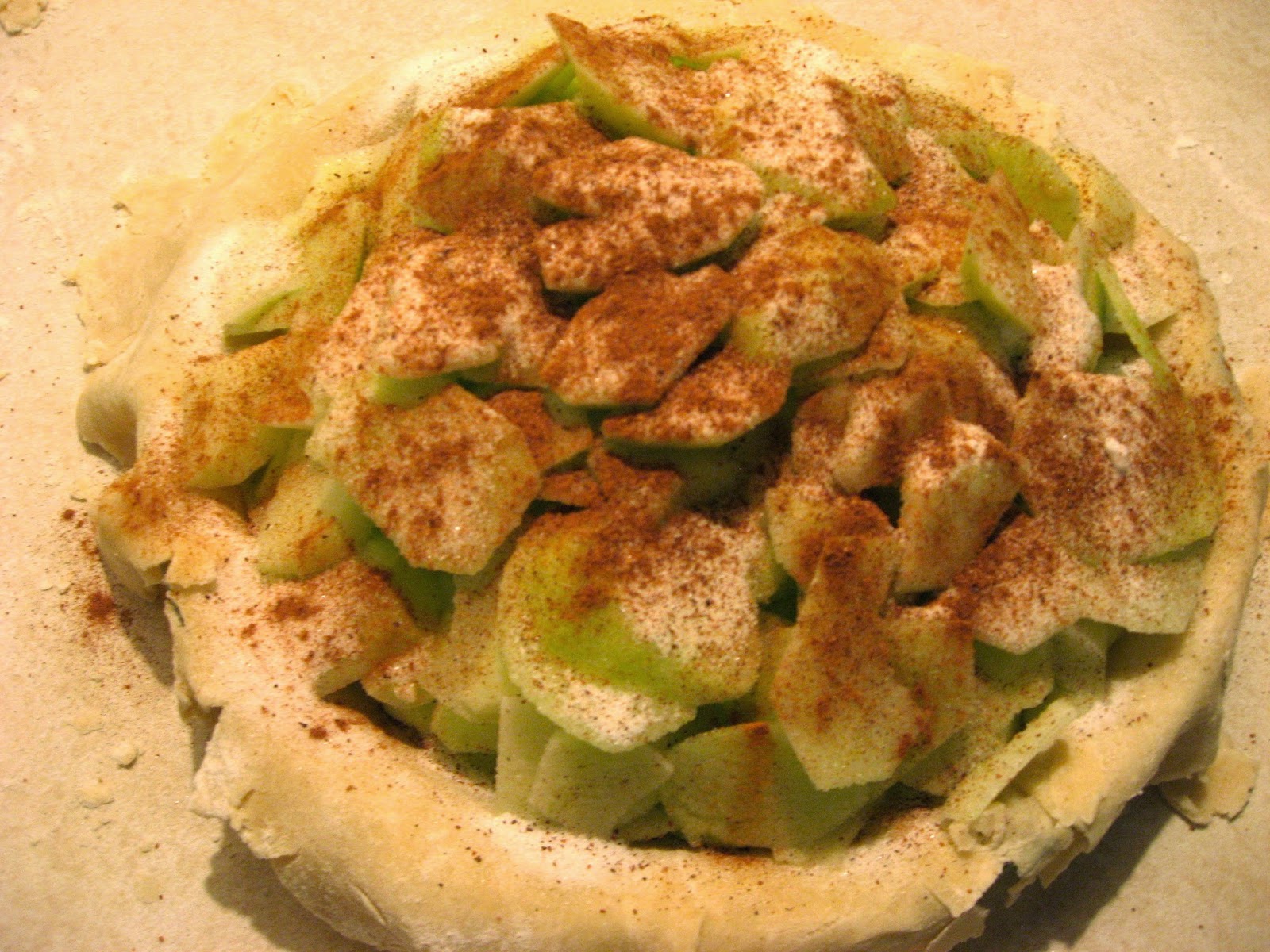For crust, my Nana taught me how to make foolproof crusts. First of all, all ingredients should be cool. I keep flour and Crisco in the fridge and use very cold water to blend. For one crust use one cup all purpose flour with 5 tablespoons of Crisco, work quickly until shortening is about the size of peas or smaller using your fingers or a fork. I use a couple of dashes or up to ¼ teaspoon of salt. Double flour to 2 cups and 10 tablespoons Crisco for double crust pie. After shortening is worked into flour/salt gradually add very cold tap water, about ¼ to ½ cup, and mix in until all flour is blended and taken up into a ball. Split in half for 2 crust pie, roll out very thin with rolling pin keeping surface of counter and dough sprinkled with flour at all times so it doesn’t stick, until rolled out to desired thickness. Over-handling or the shortening having time to warm up makes a tough chewy crust, so work quickly and handle as little as possible.
From Mildred Chaffin’s Cooking for Daily Living.
A lot of potentially good pies suffer from under baking. A nice brown crust doesn’t necessarily mean the filling is done. I prefer flour as a thickening agent. If there is raw flour in a fruit or berry pie, it came out of the oven too soon. If no raw flour is evident and you still have to eat it with a spoon, the pie could’ve used a little more thickening and possibly a little longer baking time. I have found no hard and fast rules for measurements since fresh, canned and frozen fruits differ in juice content. It is safe and sensible to bake fruit and berry pies an hour—sometimes more—until the juice boils up clear and syrupy. I start pies at 400° for 15 minutes (bottom rack) then lower temperature to 350° until juice begins to bubble. Finish at 300°. Pies won’t boil over so badly if cooking is slow and easy. (MY APPLE usually cooks 1 hour and 15 minutes, but if it’s too brown take it out a little sooner)
Putting fruit or berry pies together:
Line pie plate without stretching the dough and flute the rim (quite high) as if making a one crust pie before trimming the edge. Mix the flour for thickening with half of the sugar and sprinkle a thick layer of this on the bottom crust before putting in the uncooked filling. (FOR APPLE pie, I use ¾ cup of sugar, so half of this would be mixed with 3 tablespoons of flour and spread on bottom crust). This gives the bottom crust a chance to begin baking before it gets a soaking. (With apples, I mound quite high as they do cook down to about half volume.) Sprinkle remaining sugar on the filling along with seasonings. (FOR APPLE a generous sprinkle of cinnamon and I add a little sprinkle of nutmeg.) Place second crust atop and pinch around edges to seal, careful not to punch holes in edges, and trim off remaining crust. Cut decorative slits and you can brush a coating of milk or soft margarine (but I never put anything on them, and they turn out great).




